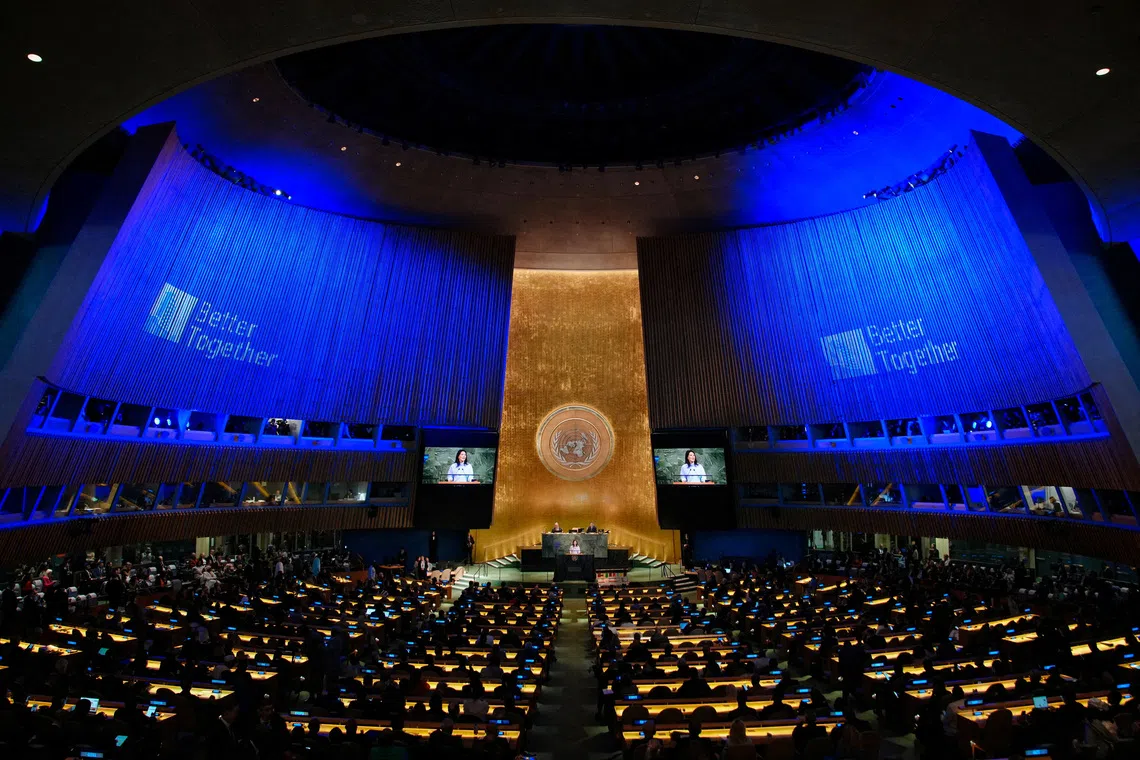
Tuesday 23rd September 2025

by inAfrika Newsroom
Haiti security force took center stage at the United Nations on Monday. The United States called for a bigger mission to push back armed gangs in Port-au-Prince. Kenya, which leads the current deployment, said the operation runs at about 40% strength and faces equipment problems. President William Ruto told delegates that second-hand U.S. vehicles sent to his officers broke down and put lives at risk. He urged partners to fix supply gaps before expanding the force.
Washington and Panama proposed moving the 15-month Multinational Security Support mission into a new Gang Suppression Force with a revised structure. The plan adds funding and brings in more countries at command level. The U.S. said the shift would speed resources and give the mission legal cover that a failed peacekeeping bid could not secure. Russia and China had blocked that earlier push to convert the mission into a formal UN operation.
Kenya committed to stay involved but pressed for fixes. Ruto said logistics hinder patrols and response times. He also warned that weak supply chains erode morale and expose units to avoidable danger. Kenyan police and gendarmes form the backbone of the field presence. They rely on armored vehicles, radios, fuel, and medical support to move through hostile districts. Breakdowns slow raids and evacuations, he said.
Haiti backed the expansion plan. Its delegate said a larger footprint could help reopen main roads, protect clinics, and secure key sites for food and fuel. The government wants a path to elections once violence eases. Officials said 1.3 million people have been displaced by gang control and clashes in the capital. They argued that a stronger force, with clear rules and better gear, would free space for basic services and polling.
The U.S. called for more sanctions on gang leaders and their financiers. It urged partners to target arms routes into Haiti and to fund police reform. Canada joined calls for tighter tracking of aid and for vetting in recruitment. The proposal keeps a civilian lead for governance and aid while expanding the mandate for kinetic operations against armed groups. The plan also sets timelines for training and joint patrols with Haitian police.
Kenya’s remarks pointed to a practical hurdle. Donors shipped older vehicles that failed under field stress. Ruto said the mission needs reliable, new equipment and steady maintenance to sustain urban operations. He warned that poor kit undermines the case for more African contributions. Nairobi seeks clear supply lines, faster reimbursements, and medical evacuation protocols before it scales up.
Diplomats said the main questions now are size, funding, and command. The new framework would include key contributors at the top table, alongside the U.S. and Canada as sponsors. A final structure will go to member states in the coming days. Backers want quick approval so units can rotate in before year-end. Opponents asked for human-rights safeguards and stronger oversight on arrests and detention.
For East Africa, the debate ties foreign policy to field risk. Kenya has led high-profile security missions in recent years. Its police now work in dense urban zones far from home. The government balances that role with domestic security needs and budget limits. A better-equipped Haiti security force could ease the strain and cut casualties, Nairobi says.
Haiti’s crisis has regional spillovers. Migration pressures strain neighbors and the United States. Aid groups say hunger has worsened. Clinics need secure corridors to deliver care. A larger, better-funded mission will not fix governance overnight. Backers argue it can create enough order for aid and elections to proceed. The UN session ended without a formal vote. Sponsors will return with a draft that folds in equipment fixes and a clearer line of authority.


